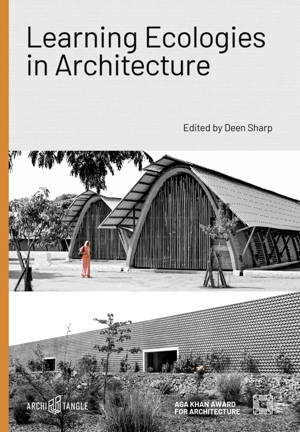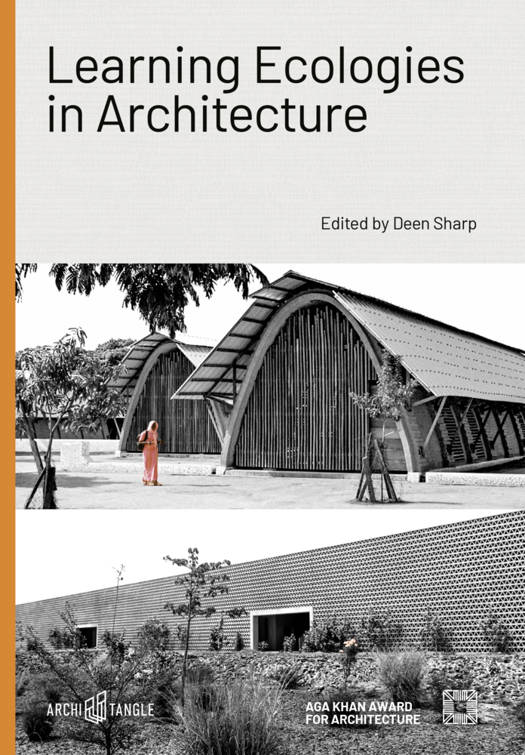
Je cadeautjes zeker op tijd in huis hebben voor de feestdagen? Kom langs in onze winkels en vind het perfecte geschenk!
- Afhalen na 1 uur in een winkel met voorraad
- Gratis thuislevering in België vanaf € 30
- Ruim aanbod met 7 miljoen producten
Je cadeautjes zeker op tijd in huis hebben voor de feestdagen? Kom langs in onze winkels en vind het perfecte geschenk!
- Afhalen na 1 uur in een winkel met voorraad
- Gratis thuislevering in België vanaf € 30
- Ruim aanbod met 7 miljoen producten
Zoeken
Learning Ecologies in Architecture
Jonathan Kplorla Agbeh, Christian Paul "Zigato" Agboada, Christian Benimana, Dawoffice, Katherine Dawson, Farrokh Derakhshani, Souleymane Bachir Diagne, Christian Hedrick, Anna Heringer, Idom, Farhan Karim, Timothy Latim, Lesley Lokko, Tubi Otitooluwa, Mamadou Jean-Charles Tall, Justicia C. T. Kiconco, Ola Uduku
Hardcover | Engels
€ 37,45
+ 74 punten
Omschrijving
Learning Ecologies in Architecture, edited by Deen Sharp, explores how exemplary educational buildings actively shape, and are shaped by, their ecological contexts through processes of translation, research, innovation, and collaboration. These ecologies are not only environmental but encompass dynamic interactions between people, organisations, and material resources, to bring educational spaces into being. Good educational design has always extended beyond the boundaries of the building, fostering and addressing the individual learners in the classroom as well as the community and contexts that nurture them. The book is guided by two Senegalese projects that won the Aga Khan Award for Architecture (in 2019 and 2022 respectively): the Alioune Diop University Teaching and Research Unit designed by IDOM and the Kamanar Secondary School by Dawoffice. These projects exemplify architecture both as a process of civic engagement, where architects purposefully involve communities, and as an environmentally conscious and responsive endeavour, applying sustainability principles and process in resource-constrained contexts. By delving into these case studies, the book interrogates the legacy and philosophy of educational design, the critical debates and practices in relation to participatory architecture, and the intricacies of representation and materiality. The first section of the book examines the historical legacies and contexts of educational architecture, with an emphasis on Africa. It traces how the design and construction of university institutions have played a pivotal role in postcolonial nation-building and identity. This historic perspective provides a foundation for analysing contemporary efforts to further meaningful civic engagement in educational design. Several contributors critically assess the successes and limitations of civic engagement in architecture, exploring the work needed to ensure that translation, participation, and collaboration lead to meaningful change. Representation and materiality remain central to the design of educational institutions, shaping how spaces reflect cultural identity and pedagogical values. Learning Ecologies presents new frameworks for thinking about these themes in a more synthetic and integrated manner. With contributions by Jonathan Kplorla Agbeh, Christian Paul "Zigato" Agboada, Christian Benimana, Dawoffice, Katherine Dawson, Farrokh Derakhshani, Souleymane Bachir Diagne, Christian Hedrick, Anna Heringer, IDOM, Farhan Karim, Timothy Latim, Lesley Lokko, Tubi Otitooluwa, Deen Sharp, Mamadou Jean-Charles Tall, Justicia Tegyeka and Ola Uduku.Beyond Ruins: Reimagining Modernism explores the potential of modern architecture renovation in the Global South as a catalyst for self-determination and community-building.
Specificaties
Betrokkenen
- Auteur(s):
- Uitgeverij:
Inhoud
- Aantal bladzijden:
- 256
- Taal:
- Engels
Eigenschappen
- Productcode (EAN):
- 9783966800365
- Verschijningsdatum:
- 15/08/2025
- Uitvoering:
- Hardcover
- Formaat:
- Genaaid
- Afmetingen:
- 170 mm x 244 mm
- Gewicht:
- 743 g

Alleen bij Standaard Boekhandel
+ 74 punten op je klantenkaart van Standaard Boekhandel
Beoordelingen
We publiceren alleen reviews die voldoen aan de voorwaarden voor reviews. Bekijk onze voorwaarden voor reviews.









